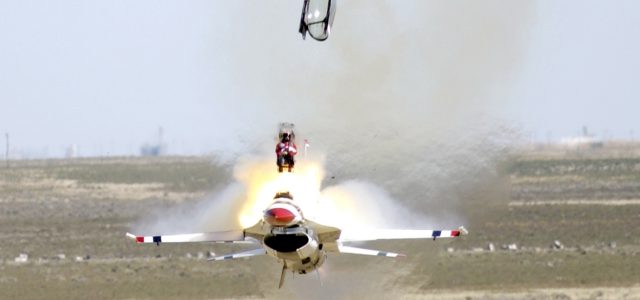1886 – Birth of Walter Carl Simon, American World War I flying ace and the first American “ace in a day” (5 scores in a single day). He also becomes the vice-director of the Peruvian Naval Flying School at Ancon, and a senior U.S. Army Air Forces officer in World War II.
1910 – The German airship Zeppelin LZ6 is destroyed by fire at Baden-Oos.
1918 – Death of Antoine Joseph Henri Louis Paillard, French World War I flying ace, killed in action after having downed four Fokker D.VIIs on this date.
1939 – First flight of the Sikorsky VS-300, the first helicopter to enter mass production.
1977 – A U.S. Air Force Boeing EC-135K crashed in steep terrain shortly after takeoff; it strikes mountains near Albuquerque, N.M., about 8,500 feet high. All 20 aboard perish.
2003 – U.S.A.F. Thunderbirds opposing solo pilot, Capt. Chris R. Stricklin, in the Number 6 Lockheed Martin F-16C Fighting Falcon, misjudges his altitude before beginning a split-S takeoff maneuver at Mountain Home AFB, Idaho. He ejects in less than a second (shown) before the aircraft impacts the runway and survives.
















